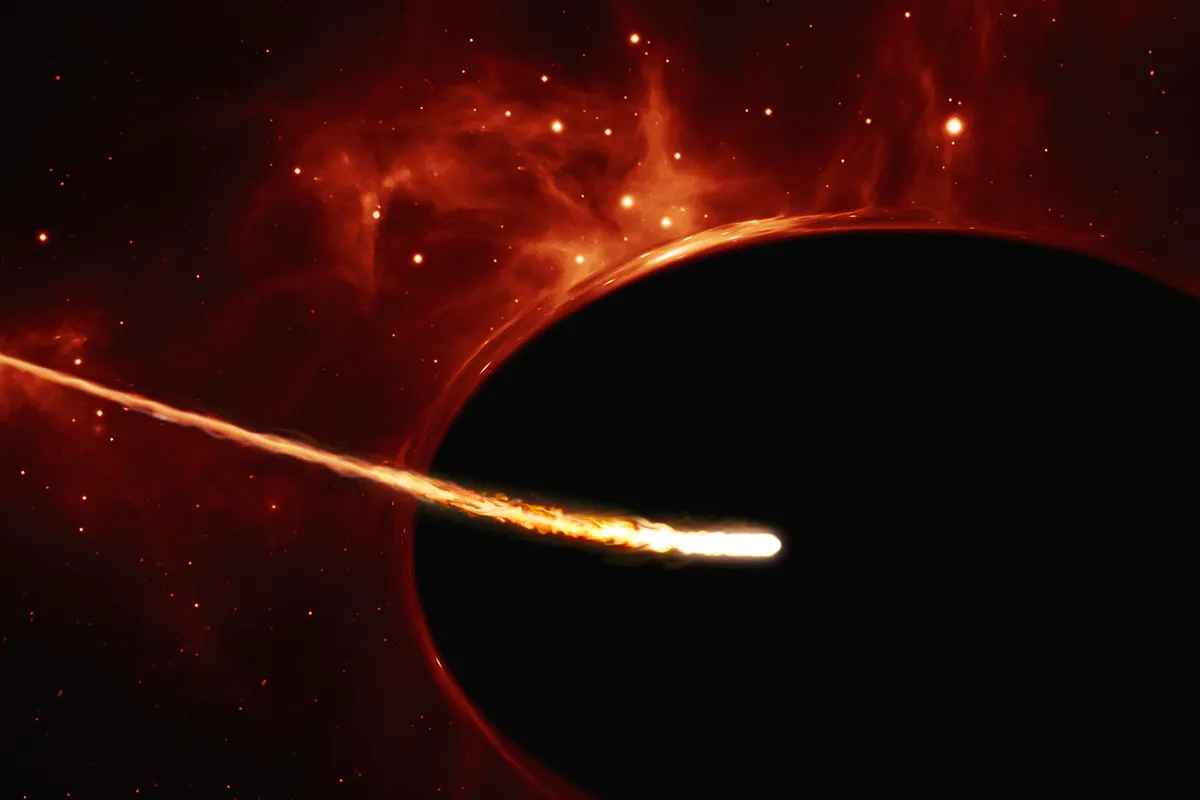Astronomers have discovered a black hole at the centre of a galaxy just 1.5 billion years after the Big Bang that's consuming matter at a rate over 40 times the theoretical limit.
Data from the James Webb Space Telescope and Chandra X-ray Observatory could help astronomers explain the mystery of how supermassive black holes grew so quickly in the early Universe.
More on black holes

Supermassive black holes explained
Astronomers now know that there are supermassive black holes at the centres of most galaxies.
Using powerful telescopes like the James Webb Space Telescope, astronomers are able to peer so deep into the cosmos they can see light from early galaxies, meaning they can effectively look back in time.
And it seems that these supermassive black holes existed when the Universe was still very young.
So how did they have enough time to grow so big, so rapidly?
One recent explanation suggests dark matter could explain abnormally big black holes.
But this study reveals an early black hole feasting on matter at an incredible rate, and could provide some answers as to how these cosmic behemoths grew so quickly in the early Universe.

Observing LID-568
The supermassive black hole in question is named LID-568 and was discovered by a team of astronomers led by International Gemini Observatory/NSF NOIRLab astronomer Hyewon Suh.
They used the James Webb Space Telescope to observe a sample of galaxies from the Chandra X-ray Observatory’s COSMOS legacy survey.
The astronomers say LID-568 caught their eye because of its intense x-ray emission.
But they weren't able to determine the exact position of the black hole from x-ray observations alone, so how would they be able to get it centred in Webb's field of view?

Webb to the rescue
Webb instrumentation support scientists suggested the team use the integral field spectrograph on JWST’s NIRSpec, which can acquire a spectrum for each pixel in the instrument’s field of view
"Owing to its faint nature, the detection of LID-568 would be impossible without JWST. Using the integral field spectrograph was innovative and necessary for getting our observation," says Emanuele Farina, International Gemini Observatory/NSF NOIRLab astronomer and co-author of the paper appearing in Nature Astronomy.
Using Webb, the team got a full view of the target and its surrounding region.
This enabled them to discover powerful outflows of gas around the central supermassive black hole.
And studying these outflows revealed that a large portion of LID-568's growth could have occurred in a single episode of rapid accretion.
"This serendipitous result added a new dimension to our understanding of the system and opened up exciting avenues for investigation," says Suh.

LID-568's stupendous feasting
Suh and her team found that LID-568 seems to be feeding on cosmic matter at a rate 40 times its Eddington limit.
This limit describes the maximum luminosity a black hole can achieve, so that its outward radiation is still balanced by inward gravitational force.
In other words, LID-568’s luminosity is higher than theoretically possible.
"This black hole is having a feast," says International Gemini Observatory/NSF NOIRLab astronomer and co-author Julia Scharwächter.
"This extreme case shows that a fast-feeding mechanism above the Eddington limit is one of the possible explanations for why we see these very heavy black holes so early in the Universe."
"The discovery of a super-Eddington accreting black hole suggests that a significant portion of mass growth can occur during a single episode of rapid feeding, regardless of whether the black hole originated from a light or heavy seed," says Suh.
Observations of LID-568 suggest it's possible for a supermassive black hole to exceed the Eddington limit, but how can this be?
One theory, say the astronomers, is that the outflows observed in LID-568 are acting as a "release valve" for the excess energy generated by the extreme accretion of material.
To find out, the team is planning follow-up observations with the Webb Telescope.
Read the full paper at www.nature.com/articles/s41550-024-02402-9

